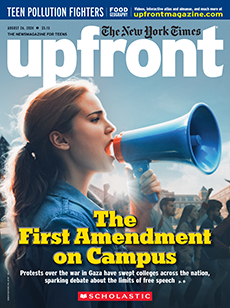1. Set Focus
Pose this essential question to guide discussion: What are the effects of climate change around the world?
2. List Vocabulary
Share with students some of the challenging vocabulary words in this article (see right). Encourage them to use context to infer meanings as they read.
- arduous (p. 12)
- inevitable (p. 12)
- disorients (p. 13)
- infrastructure (p. 14)
- deficiencies (p. 14)
- moderated (p. 15)
3. Engage
Have students share their experiences dealing with very hot temperatures. Ask: What will life be like as the world grows hotter? Revisit this discussion after the lesson, having students share any new insights they’ve gained.
